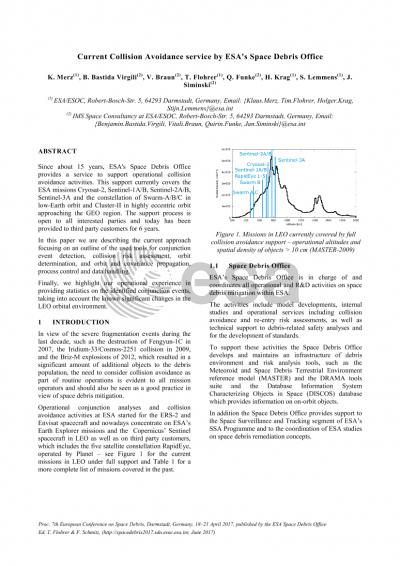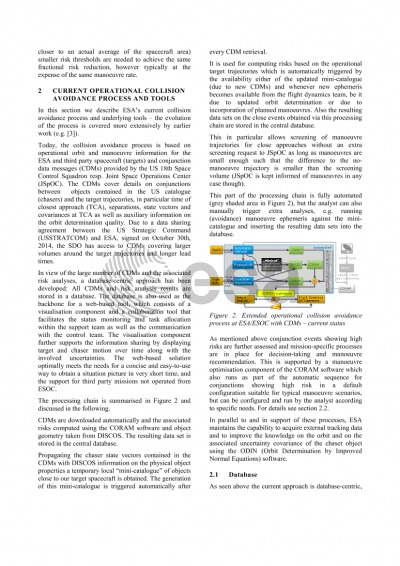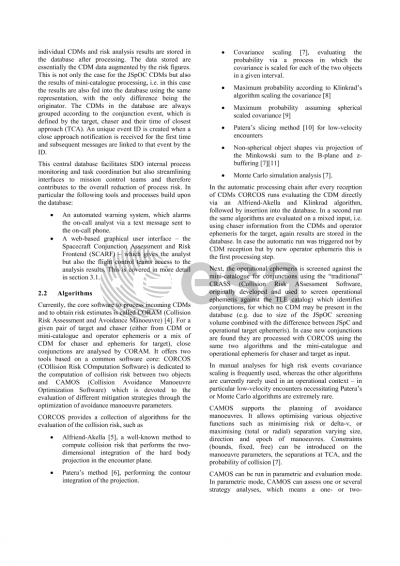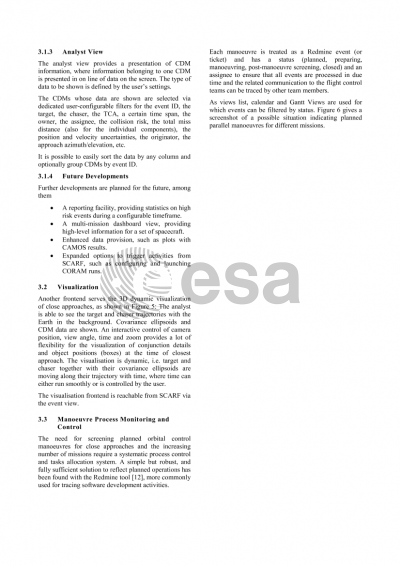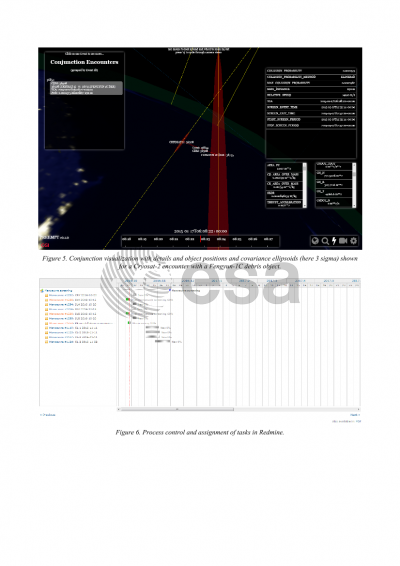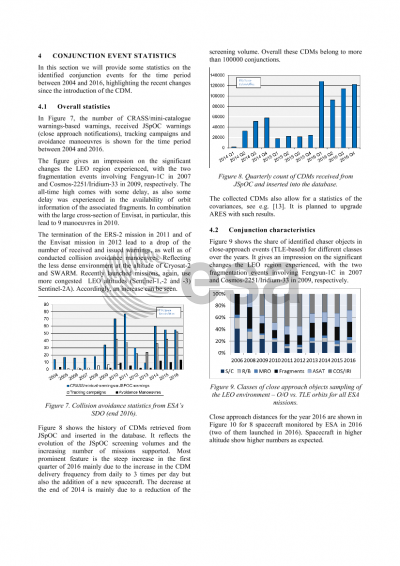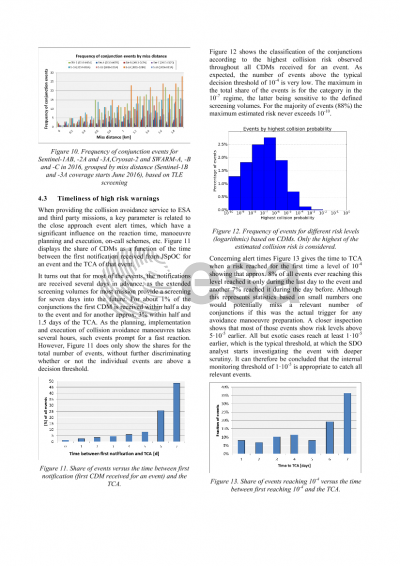Document details
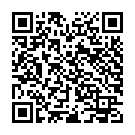
Abstract
For about 15 years, ESA's Space Debris Office provides a service to support operational collision avoidance activities. This support currently covers the ESA missions Cryosat-2, Sentinel-1A/B, Sentinel-2A, Sentinel-3A and the constellation of Swarm-A/B/C in low-Earth orbit and Cluster-II in highly eccentric orbit approaching the GEO region. The support process is open to all interested parties and today has been provided to third party customers for 6 years.
For many years close conjunctions were identified by ESA’s internal screening of mission orbits versus the public catalogue provided by USSTRATCOM In the aftermath of the Iridium-33/Cosmos-2251 collision event, USSTRATCOM has started to provide dedicated data messages based on high precision SP data. ESA’s collision avoidance process has evolved significantly since then, exploiting all the features that these messages offer to provide an extended service to missions.
In this paper we are describing ESA’s current service to ESA and third-party missions. This description focuses on an outline of the used tools for conjunction event detection, collision risk assessment, orbit determination, and orbit and covariance propagation, process control and data handling.
Today, conjunction data messages (CDMs) provided by the US 18th Space Control Squadron are retrieved and analysed in an automated way, returning the approach details and an estimate of the associated collision probability.
Conjunction events showing high risks are further assessed and mission-specific processes are in place for decision-taking and manoeuvre recommendation. We are able to propose optimised manoeuvres considering various constraints.
Propagating the chaser state vectors contained in the CDMs a temporary local “mini-catalogue” of objects close to our target spacecraft is obtained, which can be used e.g. for manoeuvre screening and to update the risk analysis whenever a new ephemeris becomes available from the flight dynamics team.
In view of the large number of CDMs and the associated risk analyses, a database-centric approach has been developed: All CDMs and risk analysis results are stored in a database. The database is also used as the backbone for a web-based tool, which consists of a visualisation component and a collaboration tool that facilitates the status monitoring and task allocation within the support team as well as the communication with the control team. The visualisation component further supports the information sharing by displaying target and chaser motion over time along with the involved uncertainties. The web-based solution optimally meets the needs for a concise and easy-to-use way to obtain a situation picture in very short time, and the support for third party missions not operated from ESOC.
In parallel to and in support of these processes, ESA maintains the capability to acquire and process external tracking data to improve the knowledge on the orbit and on the associated uncertainty covariance of the chaser object.
Finally, we will highlight our operational experience in providing statistics on the identified conjunction events, taking into account the known significant changes in the LEO orbital environment and provide recent high-interest examples.
Preview
